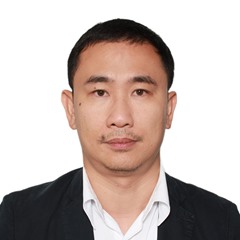The Museum of Islamic Art (MIA) unveiled a unique exhibition, titled ‘Golden Spider Silk’, on Tuesday, featuring textiles produced from spiders’ silk.
In a press statement, MIA director Shaika al-Nassr said: “The Golden Spider Silk exhibition sets itself apart by embracing sustainability as their key approach and goes on to highlight the use of eco-friendly vegan silk in the production of its final exhibit pieces – a reflection of the sustainability theme within the Qatar National Vision 2030.”
Nicholas Godley and Simon Peers, the creators of spider silk, meticulously crafted all four finished textiles, which along with historical manuscripts and folios detailing the meticulous process, are making their debut in the Middle East.
Godley and Peers’ textiles mark the culmination of more than 20 years of experimentation with this remarkable material. Initiating their ambitious endeavour in 2004, the duo embarked their journey to create textiles solely from spiders' silk.
“Our main goal was to see that it can be done, that it was possible to do because when I heard about it I thought, no, this is too crazy, there is no way you can milk a spider and get thread and make something.
“So the first challenge was to figure out how to do it, but once we did it... we thought ‘let’s try to go further and further’, and that brought us to where we are now,” Godley told Gulf Times on the sidelines of the media tour.
Among these exhibits are a splendidly embroidered cape, a brocaded weave lamba (lamba akotifahana), sheer taffeta, and a satin weave shawl, which bear exclusive examples of golden spider silk globally. Visitors can also watch a 15-minute video featuring Peers tackling the history of golden spider silk.
“We wanted to do some beautiful things that people can see with their eyes, a visual representation, because spiders often have a scary connotation, people are scared of them,” Godley said. “This is for people to see something in a way that is artistically and beautifully done”.
About the material, he noted that spider silk is truly unique – it boasts strength greater than steel or kevlar, with the ability to stretch up to 140% of its weight. Comprised of protein, he said it represents a distinct material that holds promise for the future, while also echoing the past.
Evolving more than 300mn years, he said it predates humanity itself, with spiders persisting unchanged through time, and spider silk is poised to play a key role in the future due to its renewable and environmentally friendly properties.
Companies worldwide are actively pursuing the creation or replication of spider silk, recognising its vast potential, according to Godley.
Peers, in his presentation, said the idea of spider silk weaving started in France in the beginning of the 18th century.
“I and Nicholas, we both joined forces and tried to make this actually work, in 2004, we started to do this and over the following eight years, having worked out the best ways of doing it, we then produced what you see in this exhibition.
“To this day, no one has produced anything on this scale before, and you won’t find these in any museums on the planet.”
Numerous pieces from the duo’s collection have been showcased in various public and private galleries worldwide, including prestigious institutions such as The British Museum in London, the Metropolitan Museum in New York, The Art Institute of Chicago, The American Museum of Natural History in New York, The Cleveland Museum of Art in Ohio, the Fowler Museum at UCLA in Los Angeles, The Field Museum in Chicago, The National Museum of African Art at the Smithsonian in Washington DC, and the Museum of Ethnography in Osaka, Japan.
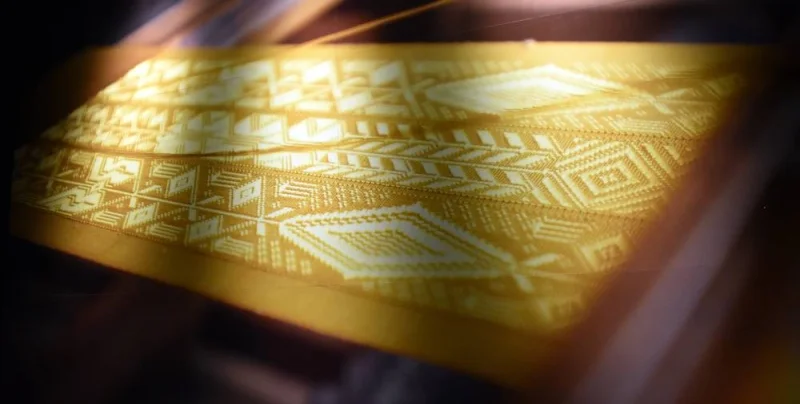
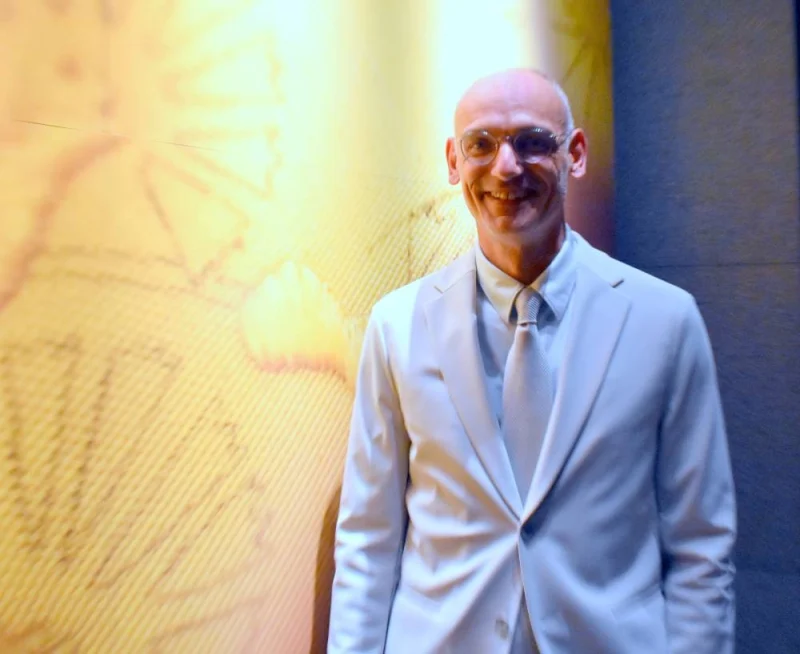
Nicholas Godley is one of the creators of spider silk who meticulously crafted all four finished textiles being showcased at the exhibition.
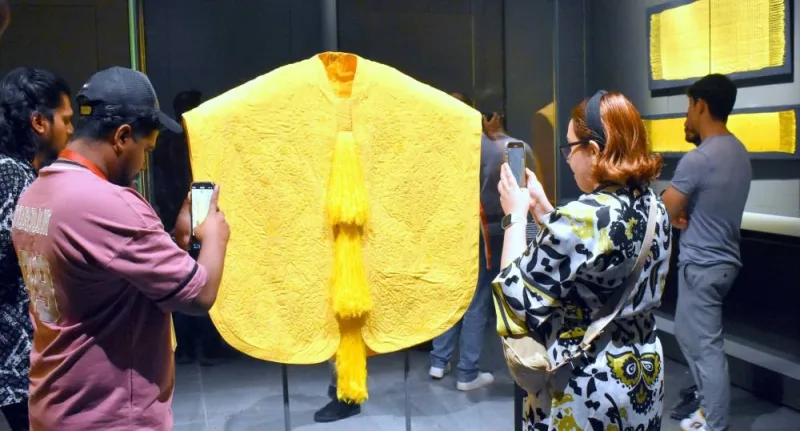
A woven spider silk cape, produced from 1.2 million spiders, was completed in two years. PICTURE: Thajudheen
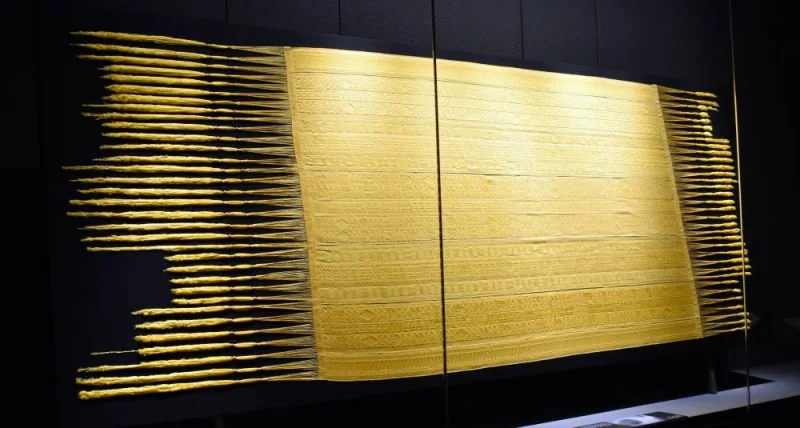
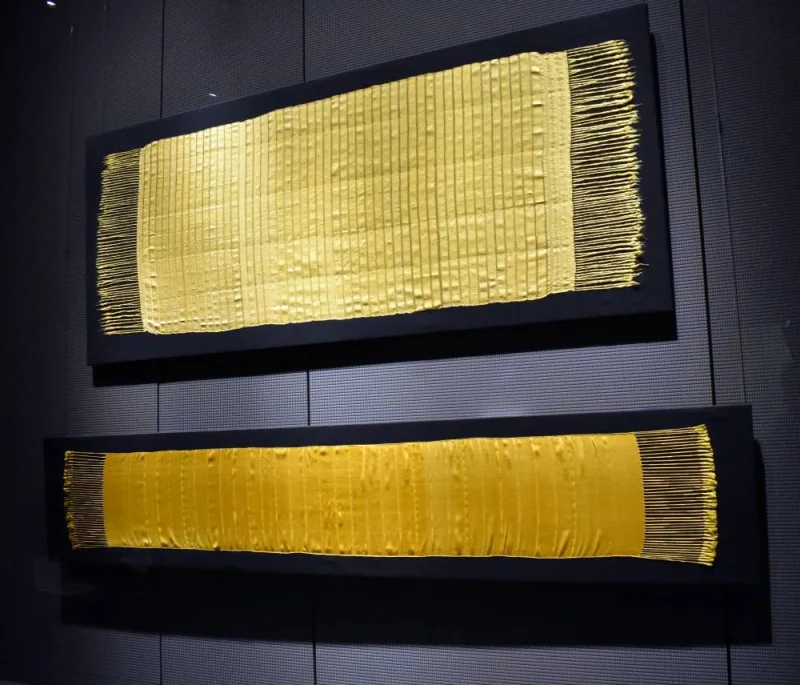
The spider silk-made textiles, along with historical manuscripts and folios detailing the meticulous process, are making their debut in the Middle East.
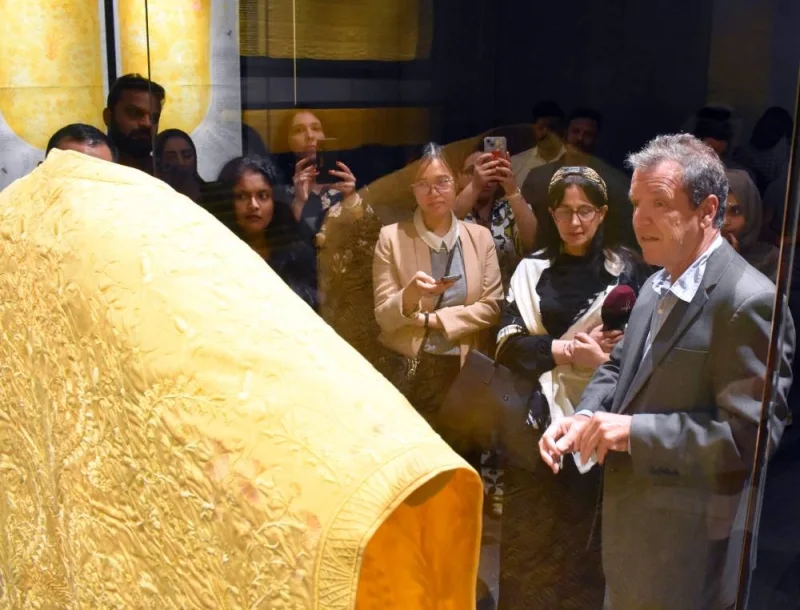
Simon Peers at the media tour at MIA Tuesday.
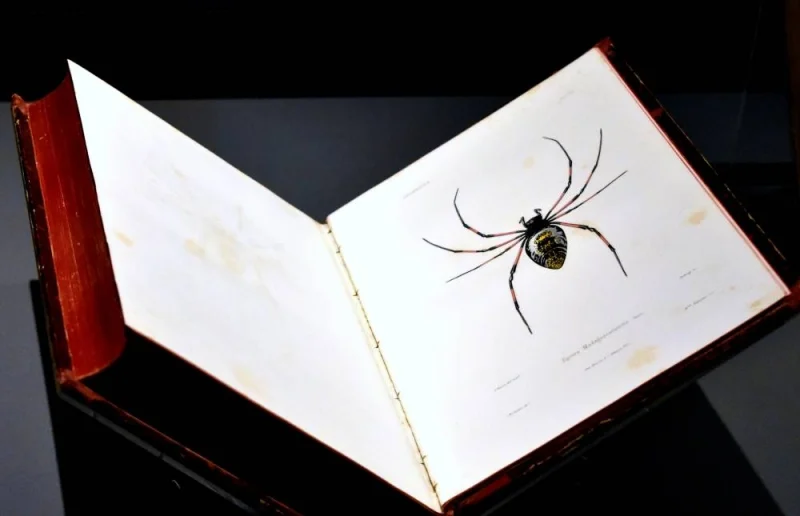
The golden orb-weaver spiders found in Madagascar.


Nicholas Godley is one of the creators of spider silk who meticulously crafted all four finished textiles being showcased at the exhibition.

A woven spider silk cape, produced from 1.2 million spiders, was completed in two years. PICTURE: Thajudheen


